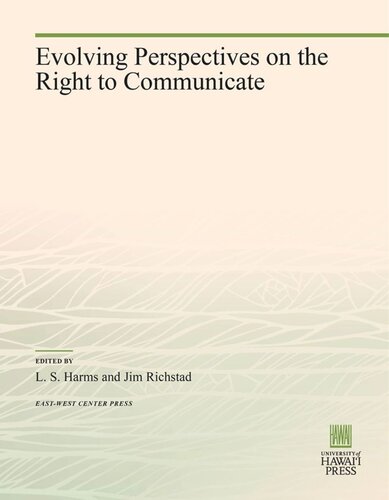

Most ebook files are in PDF format, so you can easily read them using various software such as Foxit Reader or directly on the Google Chrome browser.
Some ebook files are released by publishers in other formats such as .awz, .mobi, .epub, .fb2, etc. You may need to install specific software to read these formats on mobile/PC, such as Calibre.
Please read the tutorial at this link: https://ebookbell.com/faq
We offer FREE conversion to the popular formats you request; however, this may take some time. Therefore, right after payment, please email us, and we will try to provide the service as quickly as possible.
For some exceptional file formats or broken links (if any), please refrain from opening any disputes. Instead, email us first, and we will try to assist within a maximum of 6 hours.
EbookBell Team

4.7
16 reviewsThe “right to communicate” is an evolving and expanding concept that was first enunciated in 1969 by Jean d’Arcy. This collection of 22 original essays takes the first comprehensive look at this emerging idea and examines it from the ideologically and culturally varied viewpoints of the contributors.
The right to communicate is comprised of all the familiar rights of press, speech, opinion--as found in Article 19 of the Universal Declaration of Human Rights--as well as of the concerns for privacy, and access to media and information. But as the essays here show, the right to communicate is more than a collection or reorganization of familiar rights, going far beyond them so as to merit being called a “new human right.”